It’s been a while since I’ve posted anything on my blog. Since my last entry about pronouns, we’ve transitioned to our new home in Frankfurt, Germany where I’ve started teaching second grade at my new school. I’m at a PYP school and completed relevant training this past spring, however it’s still my first experience teaching PYP and working with the units of inquiry. The typical first unit is “Who We Are”, where we explore aspects of our identity while simultaneously getting to know our students and teaching classroom routines.
I wanted to play around with this unit a bit, especially since I’ve been reading texts like The Identity Conscious Educator, Textured Teaching, Queering the English Language Classroom, and Teaching, Affirming, and Recognizing Trans and Gender Creative Youth. Each of these texts helped me better understand the ins and outs of identity centered teaching. I’ve been learning different ways for students to explore aspects of themselves in class, but also ways to represent different identities in our communities.
My inspiration
Inspiration struck last summer while my partner and I were visiting Cologne for Documenta. Documenta is a city wide art exhibition that occurs every five years. Artists gather from around the world to showcase their work around a central theme. This year centered an Indonesian art collective Ruangrupa, and the theme is based on Lumbung, or “community rice farms”. Here’s an excerpt from the Documenta website that describes the aim of the collective:
“The collective’s way of working is based on an alternative, community-oriented model of sustainability in ecological, social and economic terms, in which resources, ideas or knowledge are shared, as well as social participation. The idea of sustainability is also comprehensively considered in the exhibition planning in all its manifestations.”
The exhibition across the city featured several different collectives and their work around this overarching theme. Here’s a few photos of some of the exhibitions:
One particular exhibition that had me thinking about community was a work by Trampoline House and their collaboration with Project Art works. Trampoline House is a collective of artists, curators, asylum seekers, and refugee advocates in Denmark. Project Art Works is a UK based collective that creates and disseminates radical art about neurodiversity, rights, and representation.
Messaging the Asylum System
Project Art Works was invited to create a workshop at Trampoline House called Messaging the Asylum System. Members of the house with flight or migration experience were explored “Cosmologies of Care”, which explored Trampoline Houses community and peoples needs within it as they seek refugee and asylum status, and whether or not the Danish government supported these needs. The participants used circles to outline the asylum system and make connections between power within the system and the community within it. Children were also involved in this process, and they co-created their own cosmologies as a group. Lastly, participants created their own cosmology based on their experiences.



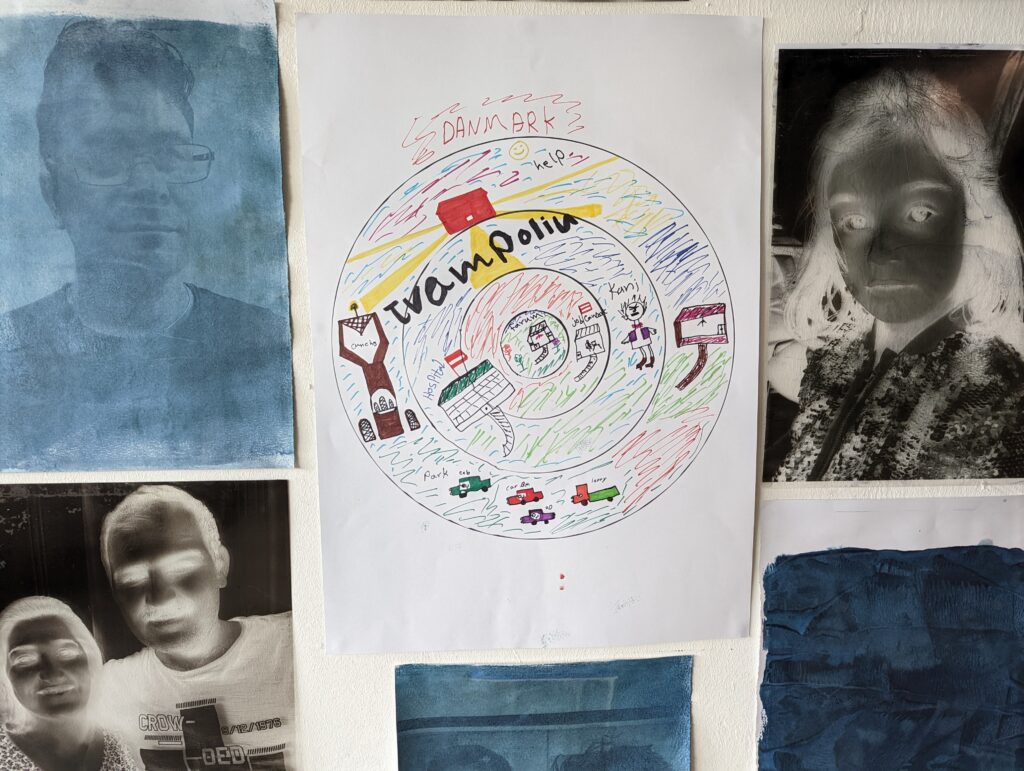
Community Care Circles
This got me thinking about community, and how community is represented both symbolically and literally with circles. When we consider our own community practices, circles play a big role. We gather in circles, communicate in circles, tell stories in circles, eat in circles, etc. I thought we can use the spirit of Cosmologies of Care to create “Community Care Circles”. We can use circles to describe and make connections within our community. We started digging into the meaning of community and symbolism behind circles using my favorite classroom tool; read alouds. Here are some of the books that we used to start us off with deep discussion about community and circles:
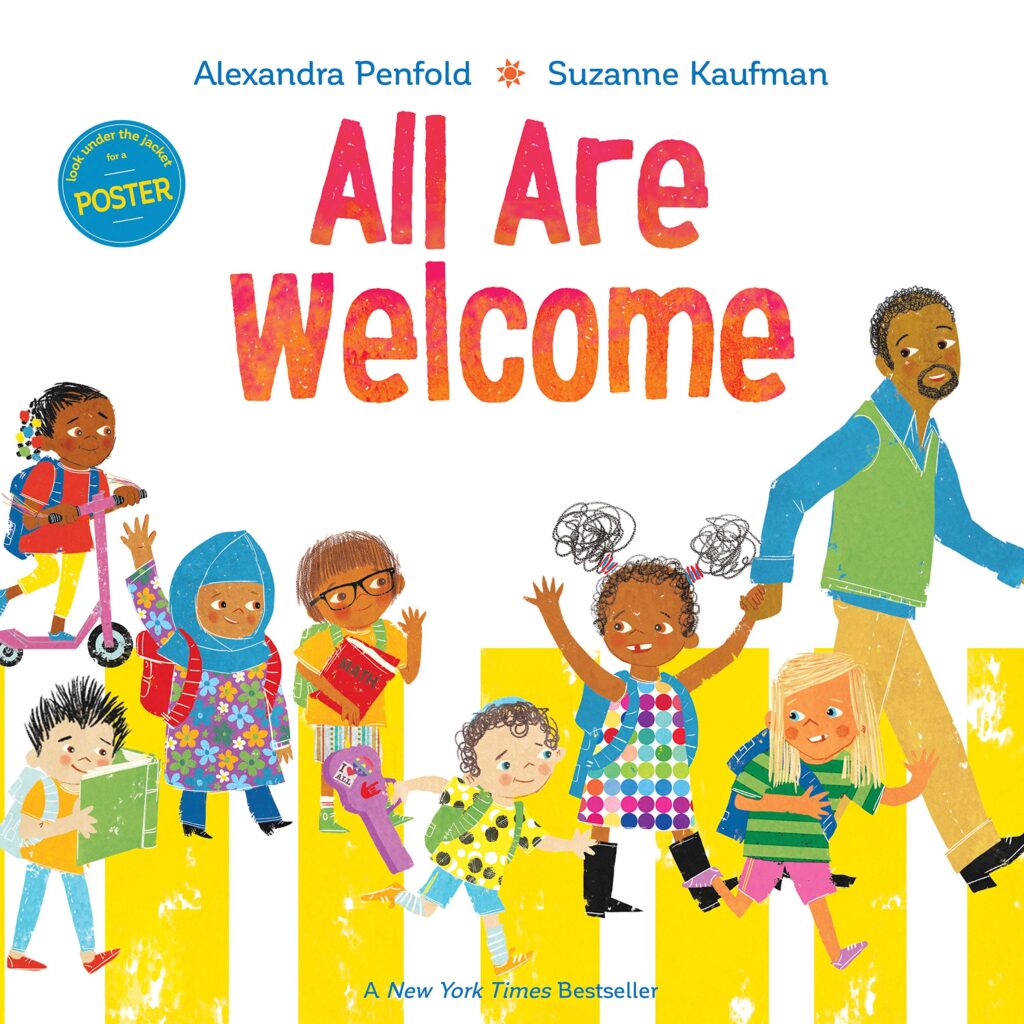
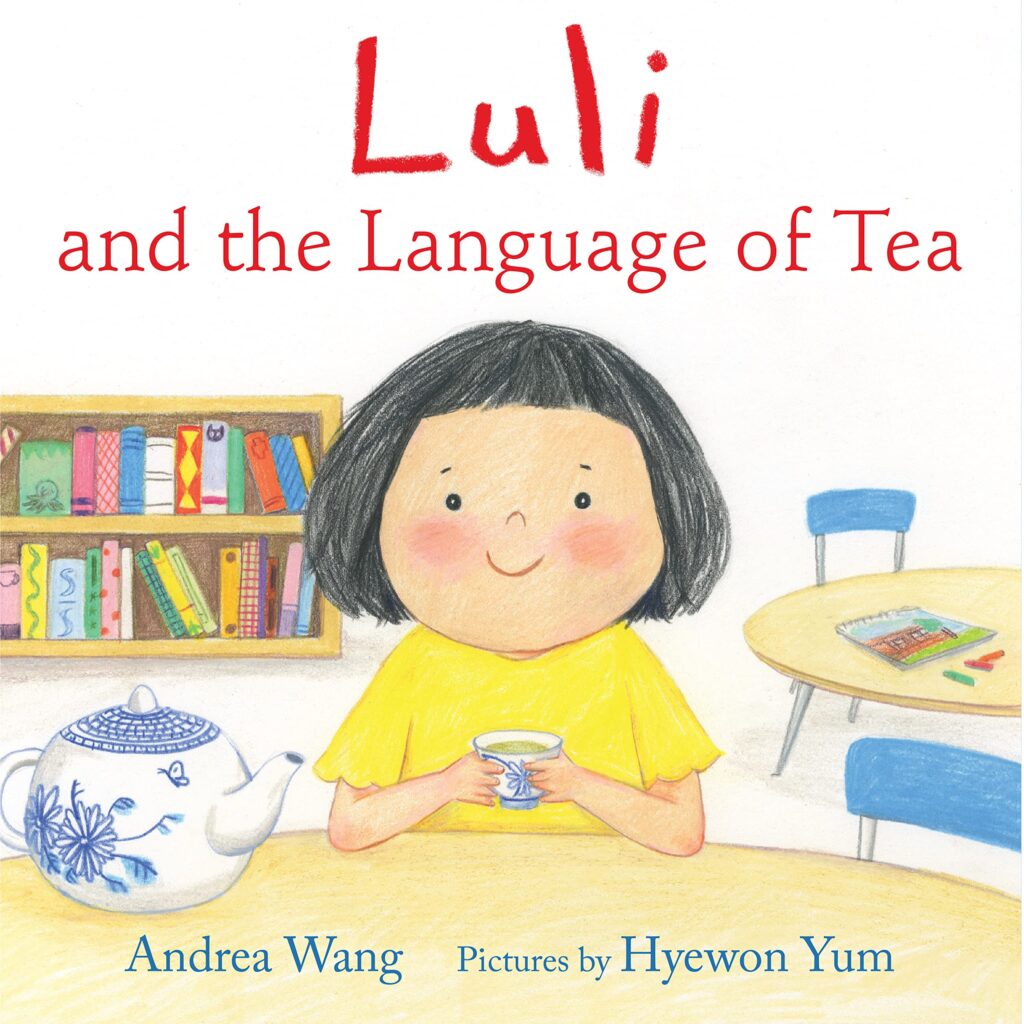

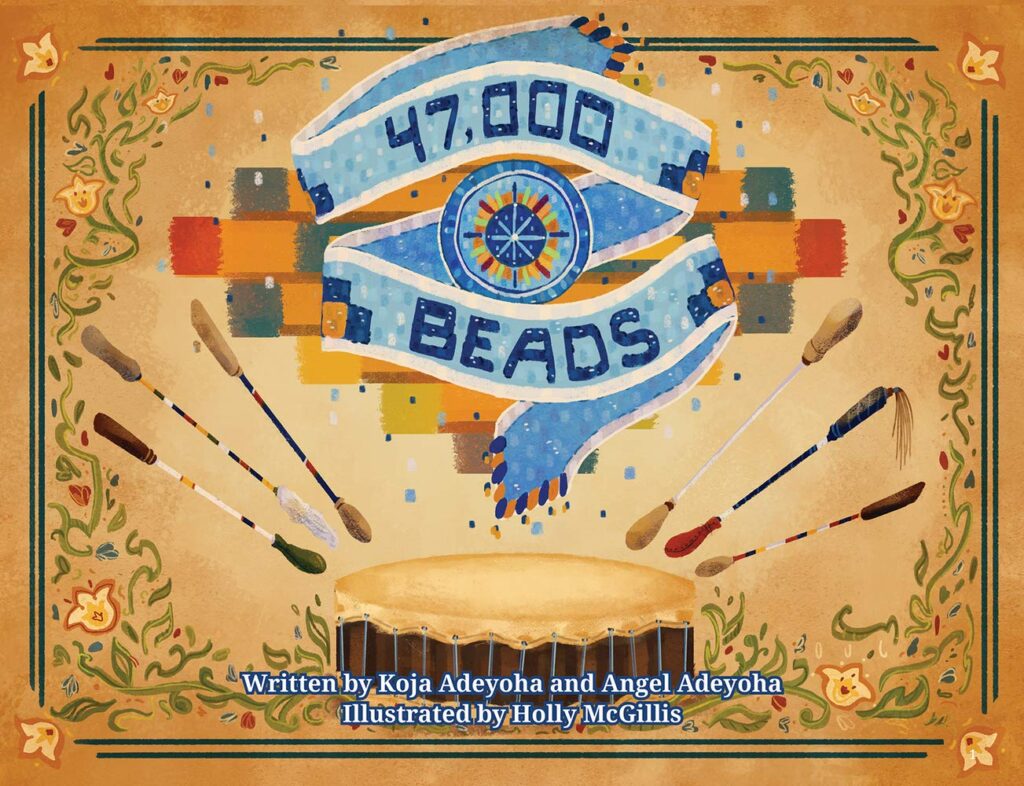
We discussed different aspects of community in each read aloud, and the students identified ways of connecting with one another (through customs, family, food, celebrations, etc.). Our next step was to analyze ways in which our own community is connected. We took a giant piece of chart paper and started off by drawing a small circle in the center with a makeshift protractor (I tied a piece of string onto the end of a pencil, and used another pencil to keep it in place. I had my most fidgety student hold the pencil for me). Our center circle had us, our classroom community. Within it, we wrote what we need as a community. In our next outer circle, we described our next immediate community connection; family and friends. We wrote out what they need as well. We drew another circle that represented aspects of our school, and so on and so forth. Throughout each circle we wrote who is within that part of our community and what they need.
Finally, we stood back to observe our work. We asked ourselves, “How are the parts of these communities connected, and how do they help each other?” We drew lines across each piece of our community to represent connections made between one another. Throughout this was a deep dialogue. We talked about all sorts of ways we are connected, even in the smallest ways. It got the kids into thinking how much we depend on others, and how others depend on us, to have our needs met.
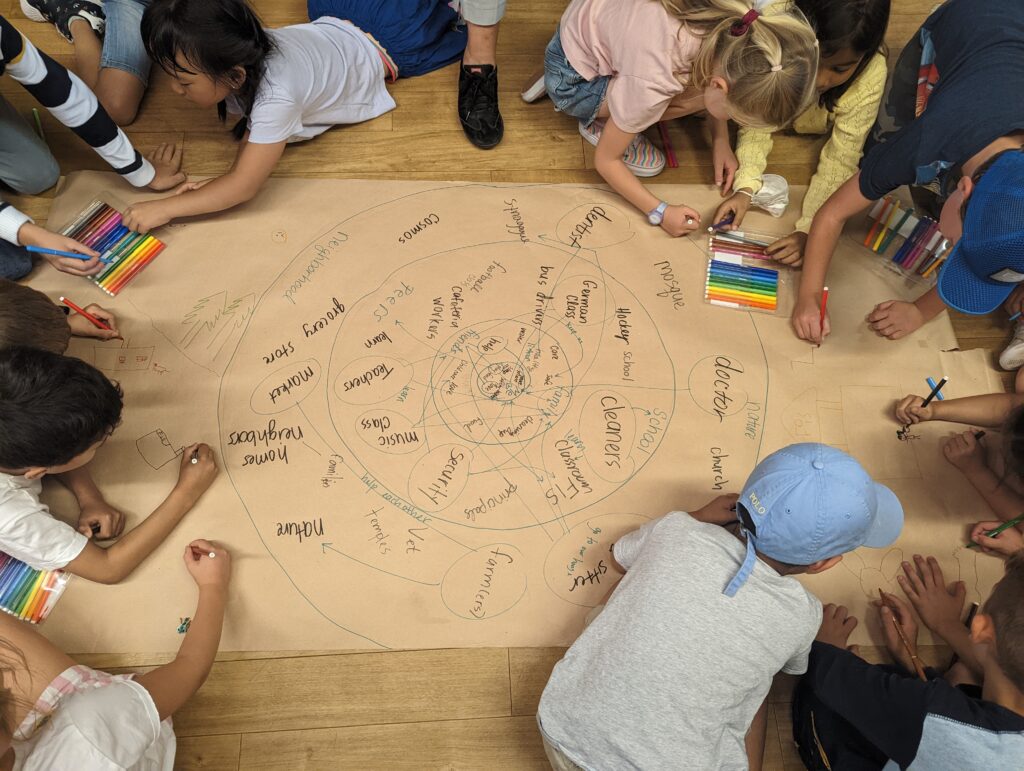
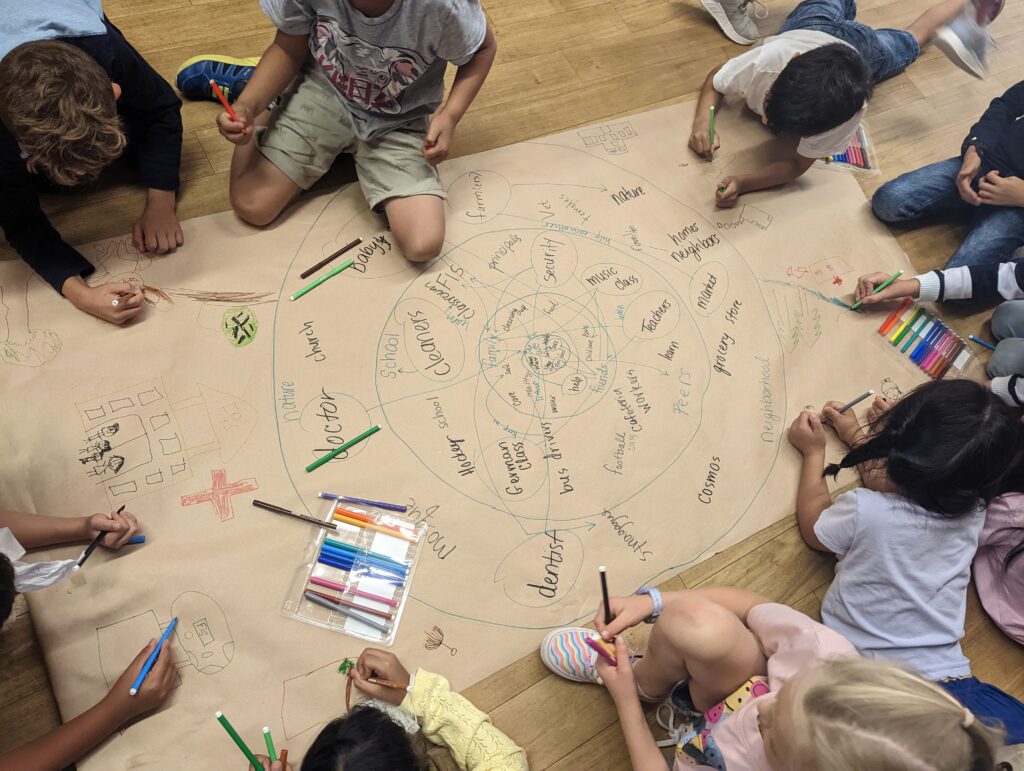
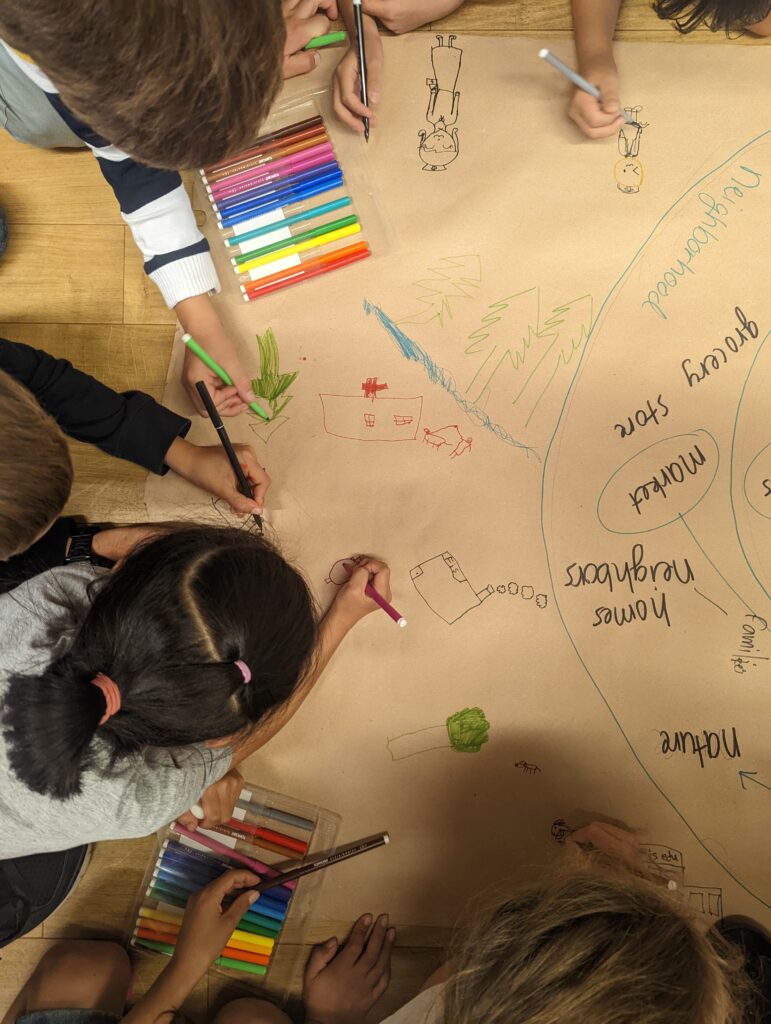
The last step of this activity was creating our own Community Care Circle. On a blank piece of paper, students made their own circles and wrote and/or drew who or what is in their community and the connections within them. Students were encouraged to articulate their ideas in whatever felt most comfortable for them in any language. Some even illustrated physical parts of their community like houses, trees, and rivers in their work.
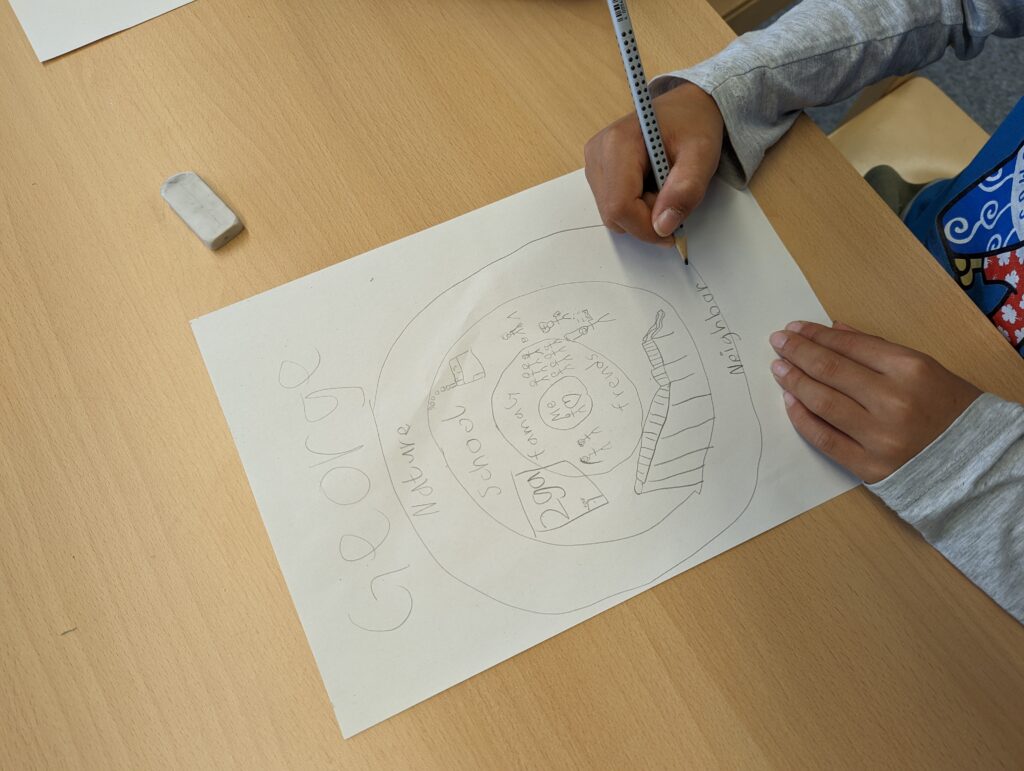
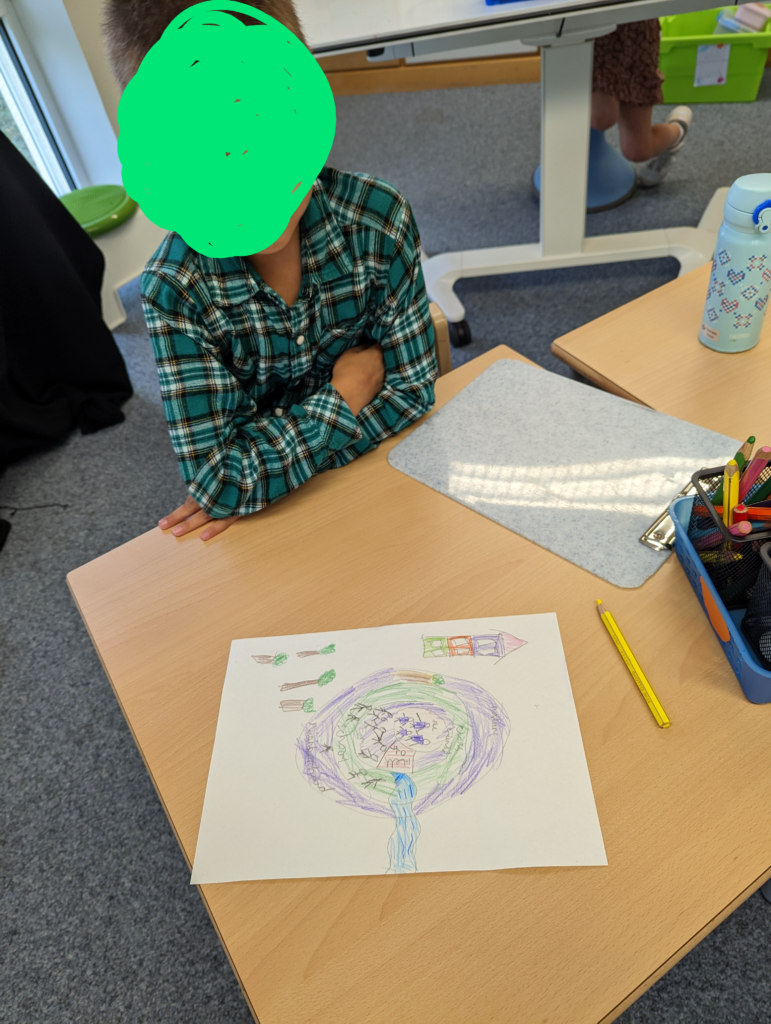
Student impact
It was clear that this was the first time students thought about community in this way. There was a bit of thought and silence initially, but once we read each of the stories and started building on this activity, students started sharing their ideas. This is a great starting point for conversations centering equity within the classroom; it emphasizes how we care for each other as a community. These are the building blocks for future lessons about gender, race, ethnicity, transformative social justice, and change. It’s also something we can come back to throughout the year as our community changes.
The extension of this activity was our “Identity Garden”, which I’ll outline in another blog post. I hope I inspired some of y’all to try something like this when discussing community with your students!
